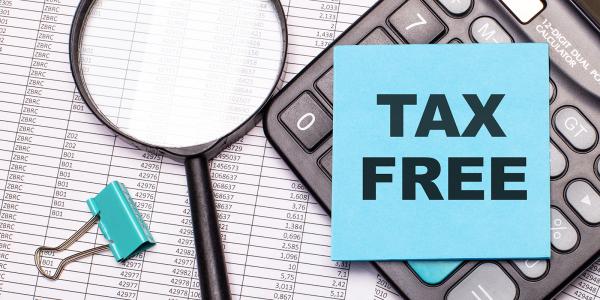Tax-free childcare
Tax-free childcare is a government childcare support scheme. It replaces directly contracted childcare and childcare vouchers offered by employers for new claimants. This page explains how Tax-free childcare works.

Content on this page:
Introduction to Tax-free childcare
Tax-free childcare is a UK-wide government scheme so it covers England, Scotland, Wales and Northern Ireland. The scheme runs through an online childcare account which you can pay money into to cover the cost of childcare with a registered provider. There is an offline option for those who are unable to use the online service (via the childcare helpline).
You pay money into the online account and the government adds money (called a top-up) to the account. You can then use the account to pay for your childcare, providing your childcare provider is registered to accept payments from the scheme. You can only pay out for childcare where the main reason for it is to enable you to work.
Children will be covered by the scheme up until the last day of the week in which the 1 September following their 11th birthday falls. If they are disabled, this is extended to the last day of the week in which the 1 September following their 16th birthday falls.
Eligibility rules
To access tax-free childcare, you (and your partner) will need to meet a minimum earnings requirement from paid work. This will mean you will each need to expect to earn at least £2,379.52 over the three-month entitlement period if you are aged 21 or over. This is an average of £183.04 a week. This does not mean you have to earn that amount every week, as long as you expect to do so on average over the three-month period. If you are on a zero-hours contract, you may earn far more than this in one week and then not work the following week, but as long as you expect it to average out to at least £183.04 a week over your three-month entitlement period then you can qualify.
You can use the scheme whether you are employed or self-employed as long as you meet this earnings level. If you are self-employed you will be exempt from meeting this earnings level in your first 12 months of self-employment and some self-employed claimants will be able to average their earnings over a 12-month period when working out if they meet the minimum earnings level.
If you are part of a couple where one of you is in qualifying paid work and your partner is unable to work then you may still be entitled.
This exception should apply if your partner is paid or entitled to:
- Incapacity benefit
- Severe disablement allowance
- Carer’s allowance
- Contributory employment and support allowance
- National insurance credits on the grounds of incapacity for work or limited capacity for work
Some people can be treated as in qualifying paid work even if they are not working – for example if they are being paid statutory sick pay or maternity pay. See our website for advisers for more information.
Self-employed claimants are also treated as in qualifying paid work during these periods if any of these bullet points would have applied but for the fact that they were self-employed immediately before the period of leave rather than employed.
You cannot claim tax-free childcare if either of you expect to have adjusted net income of over £100,000 a year.
Types of childcare
Tax-free childcare accounts can be used to pay for qualifying childcare which is defined as ‘any form of care or supervised activity for a child that is not provided in the course of the child’s compulsory education’.
Payments can only be made out of tax-free childcare accounts for childcare where one of the main reasons for the childcare is to enable you to work.
See our page about online childcare for how online tuition is treated for tax-free childcare purposes.
Claiming tax-free childcare
Tax-free childcare claims are primarily made online via GOV.UK. If you do not have online access or find using the online system difficult you should contact the tax-free childcare helpline.
The online claim process for tax-free childcare is a joint application process with the free childcare offer. These are two separate government schemes but they share one online application – you can claim one or both of them during the application process. If you are only making a claim for free childcare, you should make sure you do not accidentally claim tax-free childcare at the same time.
If you do accidentally claim tax-free childcare whilst you are also claiming tax credits, your tax credit claim will automatically end and cannot be reinstated. Previously, you could have made a new tax credit claim but now that universal credit is available across the UK, HMRC state that it is no longer possible to make a brand new claim for tax credits and you are expected to claim universal credit (or pension credit, depending on age) instead. HMRC have told us that whilst your tax-free childcare account will remain active for the usual three-month entitlement period and you cannot close it immediately, this should not prevent you from being allowed to claim universal credit if you need to but we recommend you speak to a welfare rights adviser before claiming universal credit in these circumstances.
You will need a Government Gateway account before you can apply for tax-free childcare. If you already have a Government Gateway account, you can sign in on the first page. If you do not have a Government Gateway account the process has an option to create one, and gives links to help if you have forgotten your ID or password.
If you have problems opening or operating your account see our problems guidance below.
We explain more about the Government Gateway in our digital services guide.
How much tax-free childcare is worth
For each 80p that you pay into your childcare account, the government will pay in 20p – up to a maximum of £500 (£1,000 if the child is disabled) per three-month entitlement period. This means that you can receive up to £2,000 support per child, per year and £4,000 per child, per year if they are disabled.
It is particularly important to understand that there is a cap to the government top-up if you have variable childcare costs – for example, if you just need childcare for over the summer holidays. To take full advantage of the government top-up, you might want to pay the money into your account over the course of the year, rather than in one lump sum.
Tax-free childcare interaction with other schemes
You can claim tax-free childcare in conjunction with the government’s free childcare hours offering to help pay for any childcare costs over and above the 15/30 free hours, for example.
You are not entitled to tax-free childcare and tax credits (any tax credits, not just childcare support) or universal credit at the same time. If you do submit a claim for tax-free childcare then our understanding is that your whole tax credits award (both child tax credit and working tax credit) will stop automatically. If you are getting universal credit and want to claim tax-free childcare, HMRC advise that you wait for a decision about your tax-free childcare application before cancelling your universal credit. The interactions between tax-free childcare, tax credits and universal credit are complex so we advise that if you are getting either of these benefits and are thinking of claiming tax-free childcare, you seek advice.
Parents cannot benefit under both tax-free childcare and childcare vouchers/directly contracted childcare at the same time. Anyone currently claiming such support, who has given their employer a ‘Childcare Account Notice’ (explaining their intention to claim tax-free childcare instead and leave their scheme) will have their vouchers or directly contracted childcare stopped.
The tax and national insurance relief associated with childcare vouchers and directly-contracted childcare was withdrawn from 4 October 2018 for new applicants. Certain people who signed up before that date are eligible to continue receiving the relief. See our childcare vouchers page for more information.
This means that even if you subsequently leave the tax-free childcare scheme and meet the conditions for continuing to benefit from the tax and national insurance relief on childcare vouchers or directly-contracted childcare, you cannot rejoin such schemes.
Some people will be better off claiming tax-free childcare than tax credits or universal credit. Similarly, some people may be better off claiming tax-free childcare than childcare vouchers/directly-contracted childcare. However, some people will be better off staying on the other schemes.
Whether to claim tax-free childcare and leave an existing scheme is a complicated and important decision. This is especially the case now that universal credit full service has rolled out across the UK and as a result most people can no longer make brand new claims for tax credits and other benefits that universal credit replaces. If you currently claim tax credits and you claim tax-free childcare, your tax credits will automatically end, but if you have made the wrong decision you will not be able to reclaim tax credits and instead may have to claim universal credit. This could be better or worse for you depending on your circumstances.
Problems with tax-free childcare
If you have problems when using the online service, you should first contact the tax-free childcare helpline.
If you have been affected by technical issues and this meant you incurred costs (for example, nursery late payment fees), you may be entitled to compensation via a one-off top-up payment. HMRC will also consider refunding any reasonable costs directly caused by the service not working as it should, mistakes or unreasonable delays.
You can claim compensation by writing to Childcare Services, HM Revenue and Customs, BX9 1GR.
You should include the following information in your letter:
- Your full name
- Your home address
- Your National Insurance number
- A brief description of the issues you have had
- Any costs you have incurred as a result
- Your bank name, account number and sort code
- Copies of receipts for payments to your childcare provider (if relevant)
We recommend that you send it by recorded delivery or at the very least ask the Post Office for proof of postage. You should also keep a copy of your letter.
If you are eligible for compensation, HMRC should write to you and make a payment directly into your bank account.



